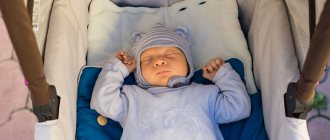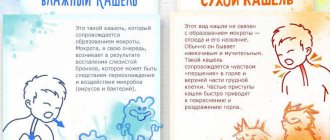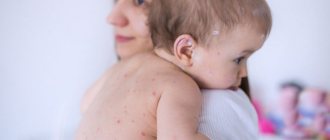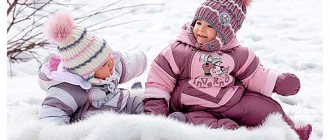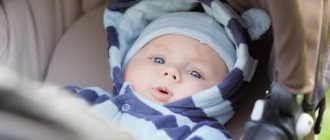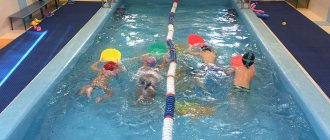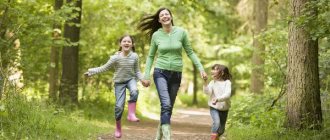Winter walks with a child. What could be more pleasant for a new mother? During a walk, a woman can relax and unwind, while the baby usually sleeps peacefully in the stroller. However, parents often have a question: how long to walk with a newborn in winter? This is exactly what this article will answer. You will learn about the features of this process. You will also be able to find out how long after you can walk with your newborn in the winter after being discharged from the maternity hospital.
Basic rules for the first walk
You can walk with your newborn baby on the 7th–10th day, provided there is no wind, rain, extreme heat or frost. It largely determines how many days the first walk is allowed and the baby’s condition. The timing may increase if the baby is born ahead of schedule, or there were complications during childbirth.
In summer, you can go for a walk on the 7th day. How long should the first party last? Walking should be no more than 15 minutes a day. Gradually add 5-10 minutes. By the end of the week of walking, the time should be one hour. In the fresh air, the baby falls asleep and sleeps from 20 minutes to 1 hour. You should not leave your baby sleeping longer than this time. The risk of malnutrition or disruption of sleep patterns during the day and night increases.
How many days after birth are you allowed to walk in winter? In winter, walks with a newborn should begin no earlier than 14 days after birth. If the temperature in winter is below -10 degrees, then the first walk should be postponed. During frosts, you can take the child out to the balcony or open the window, after dressing the baby warmly.
How many days can you take your newborn for a walk in the fall? In spring and autumn, walks are allowed already on the 9th day of life.
What are the benefits of fresh air for a one month old baby? Several important points can be highlighted:
- Presence of ultraviolet rays. When they come into contact with a child’s skin, they begin to synthesize vitamin D, which prevents rickets.
- A high oxygen content helps normalize hemoglobin in the blood. As a result, all metabolic processes are improved and the development of respiratory failure is prevented.
- Development of body thermoregulation.
- Strengthening the immune system.
- Improved sleep and appetite.
After the sixth month of life, another reason to walk outside is added - getting new impressions, developing cognitive activity.
It is better to walk between feedings. The child will behave calmer, sleep more soundly, and in cold weather this will help him get used to the air faster. You definitely need to know the weather conditions. This will help you navigate your clothes. You need to dress your baby in such a way that he has several layers of clothing.
After the adult gets dressed, you can dress the child too. If you change the order of preparation, then a baby under the age of one year will sweat and with the slightest breeze on the street he will easily get sick.
A common way to walk is to take a stroller. But some children flatly refuse to lie in it. You can try another option - using a kangaroo, slings or a backpack.
To make your walk with your child enjoyable, no matter what time of year it is outside, you need to take the following things with you:
- a blanket and blanket (light for summer and warm for winter);
- a diaper or sheet if you plan to breastfeed in the summer;
- changeable diaper;
- a pacifier (if the child is used to sucking);
- handkerchief;
- wet wipes;
- raincoat, mosquito net;
- rattles
It is better to walk away from the roads. You can choose walks in the forest or park.
At what temperature can you walk with a baby in winter?
You should only go for walks if the air temperature does not drop below -10. If the baby was born in the warm season, then you can safely go out with him for his first walks lasting 20-30 minutes. The main thing to remember is to always avoid strong winds and precipitation by using protective raincoats and nets.
In winter it always becomes harder to walk with your baby. Children usually like to sleep soundly and for a long time in strollers. But if the temperature drops below -10, then the child may become hypothermic; his body is not ready for such environmental conditions. In this case, it would be better to take a walk on the balcony or open a window in the room for ventilation.
Walk in different seasons
When getting your child ready to go outside every day, it is necessary to take into account that the thermoregulation system of a baby up to one year is not fully formed. Therefore, you need to dress it according to the weather. When a baby is too hot, his body cools down through his head, feet, and palms. Therefore they become damp and cold.
When the air temperature outside is from 19 to 25 degrees Celsius, it is enough to put on the baby as much clothes as an adult is wearing. At temperatures below 18 degrees, wear one more clothing than an adult. If it is hot outside, more than 25 degrees, then a child under one year old should wear one less layer of clothing.
Clothing must be made from natural material. It is advisable to opt for cotton clothes. The accessories in the stroller should also be made of the same material: mattress, pillow, blanket. This will allow the skin to breathe and the sweat produced to be absorbed.
In summer, the number and duration of walks every day can be increased. It all depends on the condition of the mother and baby. You should not walk during periods of high sun activity - from 11 a.m. to 3 p.m. In the summer, it is possible to feed your child without going home. Only the mother will need to wear comfortable clothes and take a diaper for this occasion. Don't forget to take some water, especially if the baby is bottle-fed.
In summer, at temperatures above 25 degrees, you can dress your child in light clothes: a dress or T-shirt, rompers, a vest, a cap, and cover with a blanket. At temperatures from 20 to 25 degrees, you need to dress your baby in warmer clothes: a cotton cap, a thin long-sleeved blouse, pants and socks.
If it is hot outside, it is allowed to sunbathe without undressing the child. You just need to do this gradually. First you can open the legs, then the arms, then the chest. You need to start with 1-2 minutes a day. There must be a light cap on your head.
If a child is fed formula for up to one year, there is no need to dilute the formula in advance. In summer it can quickly turn sour. It is better to pour the required amount of the mixture into the bottle, and dilute it with water before feeding outside.
In winter, in good weather, you can walk with a one-month-old baby for up to 2 hours a day. It is advisable to divide it into several 40-minute exits. If the temperature on the thermometer is below 15 degrees, then you cannot walk with a child who is under 3 months old.
In winter, it is best to dress your baby in several layers of clothing: a cotton T-shirt, a wool or flannel jumpsuit, a jumpsuit with natural fur so that the back is closed.
In spring and autumn, you should not walk in windy or rainy weather. With deceptive warmth and cool air, the risk of colds increases. Until 4-5 months, the child will sleep in the stroller during walks. After this time, you should try to take your baby out for walks when he is awake. It was at this time that he began to actively study the world around him.
It is not advisable to walk in the rain with a baby under one year old. Wet air is harmful to the respiratory tract, especially in children under 3 months. It is not recommended to use a raincoat - a greenhouse effect is created inside the stroller, which also does not have the best effect on the baby’s body. A raincoat can be used when the rain takes you by surprise.
Walk and illness
When a child under one year old gets sick, the mother is faced with the question of whether it is possible to go outside with him and in what weather. You cannot walk during the acute stage of an infectious disease, which is accompanied by pain, high fever, cough, and severe runny nose.
High body temperature can cause skin blood vessels to suddenly constrict when exposed to cold air, reducing heat loss. As a result, the temperature of the internal organs increases, and this is very harmful for the body of a child under one year old.
You can go for a walk if the body temperature does not exceed 37.5 degrees, the child is active and eats well. Fresh air in this case will only speed up recovery, especially if the organs of the respiratory system are affected. Before leaving, you need to clear the nasal cavity of accumulated mucus or crusts. This will ensure air flows through the nose. The air will be warmed, moistened and purified.
The duration of a walk during illness with infants should not exceed 20 minutes a day. It is advisable not to go far from home. If the baby feels worse, immediately bring him home.
You need to walk with your baby every day, regardless of the time of year. If after a walk the baby is cheerful, his back is dry, his hands are warm, it means that the clothes were chosen correctly, and the time spent in the fresh air was beneficial.
First walk
The most important and crucial moment is going for the first walk with the baby. At this time, the child’s body is not yet accustomed to such changes in conditions, and therefore prolonged exposure to the cold can negatively affect his condition. If weather conditions significantly worsen, it is recommended to postpone walking and wait until the immune system stabilizes. In this case, the first trip outside in winter should be done after the first week of the newborn’s life.
Try to walk with your baby away from the roadway. Such walks will undoubtedly only benefit the baby and his mother.
To prevent shock and hypothermia, the walk should be short at first. It will be enough to go down to the street for literally five minutes. For the first time, a five-minute outing will be enough. You don’t even have to use a stroller, but wrap your baby in a blanket-envelope and carry him out in your arms. This way he will be even calmer, since close contact with his mother calms children. Subsequently, you can gradually increase the time spent in fresh frosty air. Gradually increase the intervals by 3-5 minutes.
Dr. Komarovsky about walking with a newborn in winter
They say that children born in winter grow up stronger and healthier. It’s hard to say whether there is a sound rational grain here, but it is known for certain that parents of children in winter have more reasons to worry, because it is important to prevent vitamin D deficiency, and you also need to take your child for a walk, but it’s frosty or snowy outside! Evgeniy Komarovsky, a children's doctor and author of numerous books on children's health, tells how to walk with newborns who were born in the cold season.
It will be useful: What temperature to bring down in a 2-year-old child or in what cases it is necessary to bring down the baby’s temperature and how to do it correctly
Partying is natural
For a person, life under a roof is a necessity that appeared over time, when civilization began to overcome natural inclinations, Komarovsky believes. Adults will name 150 reasons why a roof over their heads is necessary for them. The child does not know a single reason; he is closer to nature, and the demands of a civilized society are alien to him. This is why you can and should take a walk with a child, even one born in the cold season.
There are always more viruses and bacteria indoors than outside; there is no sunlight at home (light through the window does not replace them). The child can only get fresh air and sunlight outside. According to Komarovsky, parents also need to be taught how to walk with a child. After all, the fear of carrying a child into the cold in winter, the fear that he will breathe in the frosty air and get sick, is still firmly in the heads of mothers and fathers.
All parents should remember that while the child breathes fresh air, his lungs and bronchi are freed from house dust, which accumulates in the respiratory system.
The upper respiratory tract is also cleansed and moistened, which reduces the risk of developing a respiratory infection. All systems of the toddler’s body begin to work more intensively, because the small organism needs to maintain the level of energy consumption (in conditions of low temperature, for example).
Rules for walking with a newborn
The first walk with a newborn is a special event for the whole family. Komarovsky advises not to delay this, and to start walking already on the 10th day after discharge from the maternity hospital . The duration of the first exit to the air is no more than 10-15 minutes. But the very next day you can make two exits for the same time. Gradually, by the month, the child should spend as much time in the fresh air as his parents and the prevailing weather conditions can afford.
It is very good to immediately determine the place where the child will walk in the first few months.
It is not at all necessary to drag a heavy stroller up the stairs, first down and then back, in order to ride your little one for ten minutes along a busy street, where different people walk, including carriers of ARVI and influenza.
It is most preferable to walk on the balcony in winter. If there is no balcony, then in the courtyard of your own house. If this is not possible, choose quiet places for walks where there are no large crowds of people; in winter these are parks and squares. Driving through the streets can only be caused by an urgent need - you need to get to the clinic, you need to go to the pharmacy or store, but there are no helpers.
An important question is how to dress a child, this is especially true in winter. You should not be afraid of wind, snowfall, or frost, because a healthy child, who is also dressed correctly, will not feel the slightest discomfort from the walk. This, however, does not mean that you need to carry your baby outside in any frost.
Komarovsky advises remembering a simple rule that will allow you to quickly figure out whether to go for a walk today or not. For every month of a child’s life - minus 5 degrees, but not lower than 15 degrees for any baby. Thus, if the child is 1 month old, then you can walk with him at minus five, and if he is two months old, then at minus ten.
There are no universal tips on how to dress a baby. You can understand whether you did it correctly only after returning from your first walk. If the baby is sweating or blushing, the next time you go out you need to reduce the amount of clothing . Cold is the fear of all adults without exception. But, according to Komarovsky, frozen children are hundreds of times less common than children who were carefully wrapped. It is easy to understand that a child is hot - he begins to be capricious, cry, wriggle out of his clothes, does not want to enjoy a walk and refuses to sleep on the street.
Children have a completely different metabolic rate, and therefore, where mom and dad are cold, the children are fine, but where the adult family members are warm, the child becomes hot. Therefore, you should dress him a little lighter than the grandmother requires. Sweating causes more illnesses than mild hypothermia.
The benefits and harms of winter walks
You can understand the importance of winter walks only by studying the benefits they bring. First of all, it should be noted the positive effect of fresh frosty air on a child’s sleep. Newborns sleep well outside even in cold weather. During this period, the air outside becomes cleaner and richer, and all dust is captured by snow. If there has been a recent snowfall, you will notice that there is also less noise on the roads, so nothing will interfere with your baby's sleep.
Walking in winter also helps build strong immunity. The temperature regime helps to harden the small organism. It is recommended to gradually increase the difference between indoor and outdoor conditions to improve tolerance to low temperatures and develop disease resistance. It is not for nothing that children born in late autumn and winter are usually much healthier than their peers born in the warm season. Contact with the sun is also important.
Only those walks that violate the established rules can be harmful. For example, it is important to dress a newborn correctly, and also not to be outside for longer than the established time for a specific period. Danger can await you in severe frosts, as well as in wind, snowfall or slush. In the latter case, the risk of contracting an infection increases significantly due to favorable conditions for microbes.
If the child is sick
The immunity of a newborn is far from perfect, and if the mother is breastfeeding, then the protection is somewhat higher than that of artificial babies. Quite often, after being discharged from the hospital, the baby falls ill. At this moment, parents do not even allow the thought of possible walks.
Evgeny Komarovsky claims that the only contraindication for breathing winter air is high temperature. If there is no fever, go for a walk with your snotty little one without a shadow of a doubt.
If after several walks the baby develops a wet cough, do not be alarmed; this is a very positive change in his condition, indicating that the mucous membranes of the respiratory organs have begun to moisten, and the baby has begun to cough.
Are walks with newborns in winter beneficial, see below in the program by Dr. Komarovsky.
medical reviewer, psychosomatics specialist, mother of 4 children
How and how long to walk with your baby?
We all know that a child definitely needs fresh air, but not many can clearly answer the question of why. Opinions also differ regarding how long you should walk with your baby.
Staying in the fresh air strengthens the baby’s body and significantly protects him from diseases such as rickets, flu, and pneumonia. It also promotes proper breathing of the newborn and creates the necessary conditions for enriching them with oxygen (according to studies at home, the air contains approximately five times more dust particles and microbes than on busy city streets). And in the sun, the baby also receives vitamin D, which is vital for his growing body.
How long should you walk?
Only the mother decides this, guided by her own intuition and weather conditions, since there are two opinions among doctors on this matter. First: if the baby was born in the warm season, walk with him from the first days of discharge from the hospital, if in the cold - from the second week after discharge. Second: after the birth of a child, depending on weather conditions and seasons, you must refrain from walking for at least 5-7 days.
In the first case, walk for at least two hours twice a day. In the second, it is recommended to limit the introductory walk to approximately 15-20 minutes in the summer and 5-10 minutes in the winter, each time increasing the time by 5-10 minutes. When in this way it is brought to one hour, the mother can arbitrarily change the schedule and duration of walks. And when the baby is one month old, you can walk for 2-3 hours in the summer and up to 2 hours in the winter (don’t forget to put a mattress or blanket on the bottom of the stroller).
Opinions also differ about whether it is necessary to go outside if the thermometer shows minus 15 degrees. Some say that in such weather it is better to stay at home, others say that if there is no wind, then go ahead to the fresh air. Especially if it is snowing, since snowflakes refresh oxygen, helping to settle dust particles and harmful gases. If the mother wishes, you can walk in the rain, the main thing in this case is to protect the baby from drops, for example, put the stroller in some kind of shelter, under a roof, or, if he is in a sling, put on a waterproof jacket.
In practice, the duration of the walk is set by the baby himself: the mother walks with them either while he sleeps (this can be two hours), or while he is awake and does not ask him to eat (breastfed newborns have “patience” for 30-40 minutes).
In the summer, there is no need to interrupt your walk because of this, since you can put it to your chest right on the street, but in winter it is more difficult - you have to go home. Some mothers go out again after this, others stay at home. By the way, experts recommend starting to walk with an awake, rather than a sleeping child as early as possible, so that he can get acquainted with the world around him.
It will be useful: How often can you give espumizan to an infant - dosage and duration of use
The older the child, the more often you need to walk with him - with a newborn baby you need to walk at least once a day, with an older child - two or three.
In conclusion, a few general rules:
– you need to walk with the newborn at least once a day, for how long – the mother decides, assessing the weather conditions (by three months it is advisable to walk with the child 2-3 times a day);
– in the first month of life, it is not recommended to go outside at temperatures below -10C and above +30C;
– for walks in the sun, frost or wind, use special products to protect the baby’s delicate skin;
– You need to dress your child in one layer of clothing more than you are wearing.
Getting ready to go outside in winter
To make your baby feel comfortable while walking, you should follow a few tips:
- The child should “go out” well-fed. Fed babies quickly fall asleep in a moving stroller.
- 15-20 minutes before going outside, apply special protective creams, for example, “Morozko”, to exposed areas of the skin.
- If after a walk your facial skin seems rough and chapped, you should use a product with dexpanthenol, for example, Bepanthen.
- You need to dress your baby warmly. The baby should have three layers of clothing: a vest and rompers, then a fleece or wool jumpsuit, and the top layer is a warm winter overall or envelope. Modern European companies offer excellent membrane outerwear: it does not get wet, is not blown by the wind, and retains heat well while releasing excess heat.
- You should additionally insulate your legs with woolen socks, and your arms with mittens. It is better to put two hats on the child’s head – a thin cotton one that fits tightly to the skin (“hat cap”), and a thick knitted or padding polyester one.
- Insulate the stroller. The higher the sleeping place is from the ground, the better and warmer the baby will be. As children's doctor E. Komarovsky says, it is impossible to overheat a child during a winter walk: excess heat is removed along with the exhaled air. Therefore, you can add a couple of warm blankets and a mattress under the back to your set of clothes.
- Do not cover the child's mouth and nose with a scarf. They must be open.
- How to find out if your child is cold is simple. His hands, feet and nose should be warm. Hands and feet are not available for inspection in winter, but the nose is always unavailable. At the same time, cold cheeks are a normal phenomenon due to the characteristics of blood circulation.
- On the street, a baby warms up due to brown fat - a special adipose tissue found only in newborns. If the baby was born premature or simply underweight, he does not have enough fatty tissue, and he tends to freeze quickly. Such children can usually go for walks 7-14 days after discharge from the maternity hospital.
Mothers ask how long to walk with their child in winter, if it is colder outside -15º C. The answer to this question depends on the climate of the child’s area of residence. If a family lives in the southern half of the European part of Russia, and the temperature of -20º C is extreme for this region, then it is better to refuse walks and wait out the cold at home. There will be no harm to the child after 4-5 days of staying in the room. After all, many adults feel uncomfortable in such weather, especially if there is a strong wind and the humidity is high.
If the family lives in a region where the outside temperature is -30-40º C and lasts for several months, then the baby will have to gradually adapt to the harsh climate and leave at least short walks every other day.
Features of a winter walk with a baby
For the proper formation of a growing organism, fresh air is indispensable. But each season has its own distinctive features, for example, to go for a winter walk with your baby you need to follow special rules.
In this article we will answer questions such as: on what day after giving birth can you go out into the fresh air for the first time, at what temperature, how to dress the baby, how long should a walk last for a newborn, infant and toddler?
Distinctive features of heat exchange in a child’s body
The metabolism of an infant is very different from the processes of thermoregulation occurring in an adult body.
The thermoregulation center is located in the brain, namely the hypothalamus.
Since a child grows quickly, he produces more heat per unit of time.
You cannot judge the child’s condition based on your feelings.
In children, the body overheats very quickly.
If an adult is warm, then a baby is most likely hot. It is important to understand that heat production and heat transfer occur simultaneously in any body.
Heat is consumed during breathing, sweating, and any type of physical activity. They must balance each other. This principle works in a healthy adult . In a child, the process of heat production occurs more actively.
Heat transfer is affected by air humidity and temperature, as well as wind speed.
The drier, colder and windier it is, the more energy is expended. Therefore, it is important for parents to regulate the number of layers of clothing worn on the child and the quality of the material from which it is made. Heat production in babies under one year of age is difficult due to the fact that they have underdeveloped sweat glands
. This feature makes it more difficult for a child to cope with an increase in temperature using the sweating mechanism. This process is carried out due to oxidative processes that occur at the level of brown adipose tissue, which is found only in newborns. It protects the child from hypothermia. It is distributed unevenly in the body - around the internal organs, behind the sternum and between the shoulder blades. Oxidative processes are also activated during physical work, that is, the work of muscle groups.
Thus, any physical activity (crying, rolling over, active movements, massage and gymnastics) increases heat production in the child
.
Children have thinner skin. Therefore, the vessels located underneath are more sensitive to external factors, and remain in a spasmodic state longer in a cold room, and vice versa, they expand in the heat. Normal room temperature for children:
- The air temperature does not exceed 22 degrees (optimal 18-22 degrees).
- Air humidity 50-70%.
Premature, low birth weight babies are more susceptible to heat transfer disturbances.
During intrauterine life, the fetal body temperature is maintained at an average of 37.3 degrees. After birth, the baby is still covered in lubricant, which continues to protect it from excess evaporation. At this stage, hypothermia of the baby is extremely dangerous. To maintain the optimal body temperature of the newborn, it is recommended that he stay with his mother. Mom, applying it to her chest, will continue to warm her with the warmth of her body.
During the first year of life, a child’s body temperature of 37.0-37.1 degrees is the absolute norm.
Cool air is easier to deal with with clothing than hot air. To combat the heat, the body's internal resources will be consumed due to thermoregulation processes.
Important rules for walking in winter
Everyone knows that daily walks with a child are mandatory.
- It is advisable to bring the situation to the point where the child is outside during the entire nap time between feedings.
- First the mother gets dressed, then the child gets dressed. Otherwise, the child will sweat at home and freeze outside.
- If it is not always possible to go out into the fresh air, then you can use a balcony or loggia for these purposes. .
However, it is necessary to secure the space for the child to sleep. Ventilate the balcony or loggia in advance; wipe dust remove dangerous objects; close the windows and dress the baby appropriately.
The benefits of walking in winter
- Prevention of respiratory viral and bacterial diseases.
- On sunny days, exposure to ultraviolet radiation. It promotes the production of vitamin D, necessary for full growth and formation of the musculoskeletal system.
- Motor activity that develops motor development.
- A large selection of winter fun helps diversify your child’s leisure time.
- Expanding your horizons. Allows you to monitor changing natural phenomena.
- Helps to consolidate the correct daily routine, improves appetite.
How long and in what weather can you walk with your newborn in winter?
The newborn period includes the age from birth to 28 days of life, that is, in fact, the first month of the baby’s life. The first exit to the street should take place no earlier than 10 days from the moment of birth. The first walk should not exceed 15 minutes.
Provided that there are no additional restrictions on the advice of a doctor. On the second day, the walking time can be increased to half an hour.
On the third day you can already go out twice a day for 30 minutes. By the end of the month, it is possible to increase this time to 2-3 hours a day, dividing it into 2 times
. The temperature in the first days should be
no lower than 15 degrees,
preferably the weather is not windy. 15 minutes before going outside, it is necessary to lubricate open areas baby's body with nourishing baby cream. This way you will prevent his delicate skin from hypothermia and frostbite. The cream should have time to be absorbed.
How to dress a newborn outside in winter?
A newborn baby should be dressed in winter according to the following principle:
- diaper
- bodysuit with long sleeves,
- shoulder snap rompers
- warm socks
- fleece overalls,
- cotton cap,
- warm knitted hat made of natural thread.
A newborn sleeps motionless during a walk, so he should be dressed warmly. Instead of overalls, a comfortable down envelope with closed legs is better suited. It is better to walk with your baby in a stroller-cradle specially designed for this purpose.
It retains heat and does not allow cold wind to pass through. For insulation, you can additionally put a wool blanket, a down scarf or a special sheepskin liner in it. It is better to save sleds for older children.
What weather is it like and how long should you go for walks with a baby under one year old?
In winter, walks with the child should be carried out twice a day in any weather. The walking time depends on the temperature conditions.
- In calm weather at temperatures down to minus 10 degrees, you can walk for up to 1.5 hours.
So, the daily duration of a walk can be 3 hours.
- At temperatures from minus 10 to minus 15 degrees, it is advisable to reduce one-time going outside to 40 minutes.
The daily duration of two walks, in such weather, can be up to 1.5 hours. - At a temperature of minus 15 degrees, the walk should last no more than 30 minutes.
Of course, you should not go out in severe frost, snowstorms or especially strong gusty winds. If such a need arises, then you need to think carefully about clothing options for the child.
How to dress a baby up to one year old in winter?
Thus, the baby should be dressed in several layers of clothing:
- Diapers, T-shirt, tights or rompers.
- A blouse or bodysuit with long sleeves and socks.
- Fleece one-piece overalls at temperatures from minus 15 degrees.
- Warm winter overalls with a hood. A scarf is tied around the neck.
- Shoes and mittens. Warm winter knitted or fur hat.
How long should you walk with a child over one year old in winter?
What are the benefits of walking?
Keeping a child in an open space for several minutes or hours (depending on natural and other related conditions) is supported by pediatricians, as doctors see this as an obvious benefit, consisting of several positive aspects:
- The child’s body is saturated with oxygen, which promotes sound sleep and good appetite.
- When the sun's rays hit the skin (not protected by SPF creams), it produces vitamin D. It is responsible for the growth and proper formation of the skeleton, and the well-being of the nervous system. Its deficiency leads to rickets.
- Exposure to cold air, wind, moisture, and sun trains the body to adapt to different conditions, and this is how hardening occurs.
- During a walk, the respiratory tract is cleared of dust, household allergens, microparticles of animal epidermis, etc.
- A child’s contact with the environment, including street dirt, “teaches” the immune system to respond correctly to external stimuli. The lack of such irritants provokes allergic and autoimmune diseases.
Walking is beneficial not only for the baby, but for the whole family. A young mother needs to be in the fresh air. And if it is possible to organize relatives for a walk, then it is better for a woman to relax in a calm environment at home: take a bath, drink a cup of coffee, sleep an extra half hour or do something around the house. If caregivers do not have the opportunity or time to walk with the baby on the street, it is advisable to organize sleep on the balcony or at least with an open window.
If a nursing mother walks with her baby, she should also take care of her mammary glands. During the period of breastfeeding, they are very vulnerable: stagnation of milk easily appears, which, when exposed to hypothermia, develops into purulent mastitis. This condition requires surgical treatment.
How to properly dress a child over one year old?
These should be shoes made of genuine leather or synthetic materials (for example, membrane). It retains heat well and does not allow moisture to penetrate inside. The size must be selected in such a way that there is the necessary supply of air space for better heat retention.
- Secondly, a warm hat made of natural materials, preferably in the form of a “helmet”
».
It will be useful: Is it possible to dilute Lactazar in water for babies: reviews of dietary supplements for children Pharmstandard Lactazar, does it help?
It protects the baby's delicate neck well from the wind. If you don’t have one, then the hat must have ties or fasteners to securely cover the ears.
Better waterproof ones made of dense synthetic materials that keep heat inside well and reliably. If these are natural woolen materials, then it is good to have a second pair in reserve. They quickly get wet and allow the cold to penetrate.
- Fourthly, outerwear should be warm and waterproof.
A hood is required to cover the baby's head in case of wind or snowfall. The ideal option would be a one-piece jumpsuit with a zipper at the front, which does not ride up like a jacket and is completely windproof.
How many degrees can you walk with a child under one year in winter?
Walking with your baby is a must for those parents who want to raise healthy children. Busy mothers try to find time to take their children to the playground for active outdoor games at least twice a day. In total, such walks amount to at least 3 hours. Mothers of younger children wonder how long to walk with a baby under one year old in winter at subzero temperatures.
Is it possible to walk with bronchitis and ARVI?
Children often and sometimes suffer from colds for a long time. They also experience serious illnesses: bronchitis and pneumonia. Questions about walking in this case are resolved individually with the attending physician. As a rule, walking with bronchitis is allowed if the acute period has passed, the baby feels better every day, and the air outside is not too cold or humid.
In case of ARVI, when a child has a runny nose, they are allowed to walk under the same conditions, but it is necessary to provide the baby with nasal breathing, since cold street air warms up only in the nasal cavity, and breathing through the mouth threatens respiratory tract diseases. To prepare for a walk with a baby, if you have a runny nose, you need to rinse your nose with saline solution and, if necessary, drip vasoconstrictor drops selected by your doctor.
Thus, walking in winter is a pleasant and useful family activity. There is no need to “marinate” the baby at home, trying to protect him from the cold. On the contrary, sleeping in frosty air is very beneficial for a child under one year old.
Features of walking with a newborn in winter
Walking for an infant is very different from how children over one year old spend time outdoors. The baby most often sleeps during walks, and the mother pushes the stroller with him through the streets. Therefore, until the moment when they still do not know how to roll over and crawl, it is advisable to walk them on an open balcony, if there is one.
Important! Children over 3 months old should not be left unattended on the balcony if the design of the stroller is not capable of securely securing the child in the cradle using straps and a zipper on the envelope.
Place
To make the walk as pleasant as possible, it is best to take place in an area without much traffic, where the air is very dirty and noisy. For example, parks are suitable places. Fresh air is good for everyone, especially little ones.
Because the baby's immune system is still immature, the baby relies heavily on the mother's antibodies found in breast milk. Therefore, you should avoid closed spaces and meet with many people who may be carriers of various viral diseases. Avoid crowded places such as public transport, markets, shopping malls and more. They are also not a great place for a small child.
Gradually, the duration of your walks will increase, and you must be prepared for emergencies. Take a couple of clean, dry clothes, a few diapers, wet wipes, a bottle of water, and possibly prepared milk (if it's baby food).
Walking outdoors also helps in relieving baby's colic. If this bothers you at home, you have to leave the house, and the child often falls asleep.
Walking is also good for the mother. They help to recover faster after childbirth, improve mood due to increased production of endorphins, and help get rid of accumulated physical and mental stress associated with the early days of a newborn at home.
To what extent can you walk with a baby?
Negative temperatures are not dangerous for babies. You can walk with him even when it’s negative. The main thing is a sufficient number of layers of clothing and special creams or ointments on the face that protect the skin from moisture loss, chapping and frostbite. General recommendations boil down to the fact that you can calculate the permissible minimum temperature for a child using the formula: after one month, subtract 5 degrees.
In other words, it is not recommended to walk with a newborn in subzero temperatures. Month-old babies can be outside at -5˚C without risk. Two to three month old babies enjoy walking even at -10˚C. For central Russia, walking is safe even at -15˚C. A baby sleeping in a stroller can feel comfortable even at -30˚C. Only parents are very scared that the child will freeze, but they will not notice it.
If adults doubt the safety of the party, you can safely do without it until the frost subsides outside. If a family decides to endure extreme conditions at home, it should pay more attention to the air quality in the rooms:
- the winter period is not a reason to cancel ventilation;
- it is permissible to warm the room to no more than 22˚C;
- Air humidity must be maintained in the range from 55 to 70%.
Attention! If the family does not have a humidifier, you can solve the problem of dry air by using wet towels covering the radiators, regularly washing the floors or spraying flowers, curtains and upholstered furniture with a spray bottle.
To what degree you can walk with a child up to one year in the winter, most often the mother herself can decide. If she has taught her baby to sleep outside from summer or autumn, until frosts arrive, then with their arrival she is unlikely to be able to give up her children's sleep in the fresh air.
In order not to worry about your child’s condition while walking in the cold, you need to keep the following in mind:
- heat is retained between layers of clothing, so to provide sufficient warmth for the child, he needs to be dressed in several layers;
- clothing should not squeeze the body or compress its individual parts - the inability to move arms and legs in the cold can cause hypothermia;
- a child, while walking in subzero temperatures, easily loses excess heat through breathing, so it is impossible to overheat him in such weather conditions, which gives parents the right to put as much clothing on the baby as they want;
- Not a single child will silently endure hypothermia; if he really freezes, he will certainly loudly inform his mother about it.
If you are afraid to go out into the cold with a newborn, it is worth thinking about how entire cities in northern Russia live. There the thermometer is below -30˚C for 5-6 months a year. This does not become a reason for mothers accustomed to frost to keep their infants at home.
Frost in Yakutsk is significantly different from frost in St. Petersburg, even if thermometers show the same value. The difference in air humidity makes its own adjustments. The dry air of northern latitudes makes it easier to inhale frosty air, while the humid climate of the Northern capital turns a not terrible -15˚C into a sensation of -30˚C.
High humidity and frost
Pediatricians, answering a question from parents about how many degrees can be spent walking with a baby in a frosty winter, answer that if extremely low temperatures are rare for a particular region, it is better to stay at home and wait for the temperature to normalize. If a family lives in a climate where -30˚C can be observed outside the window for several months in a row, one should not be afraid to go for walks.
The length of time infants stay in the cold should be adjusted, gradually increasing. The first time you can limit yourself to 30 minutes. Next time you are allowed to go out for an hour.
Important! Without being afraid to go outside in the cold, parents will be able to provide the child’s body with fresh air full of oxygen, as well as sound sleep. The smartest option for walking in the cold is to put the stroller on the balcony. Even at -30˚C, the baby will happily sleep for 4 hours.
What to take with you on a walk
If a baby sleeps in a stroller in winter not on the balcony, but while rolling down the street with mom or dad’s help, you should think about the fact that the baby, unlike the accompanying person, is protected from the wind by the cradle and stroller, but the adult pushing him is not. Therefore, there is no need to be shy about taking care of yourself while walking your children: prepare a thermos with aromatic tea that will allow you to walk for more than 30 minutes.
No special equipment is required for the baby. He will sleep, wrapped warmly in the cradle. It is imperative to worry about open areas of his face in advance. Today in stores you can find a wide selection of protection against wind and low temperatures.
Attention! You can apply such cosmetics to your skin no later than 20 minutes before going out. The cream should have time to be absorbed.
If a 10-11 month old baby can already walk and is actively exploring the snowy street, you should always have replacement gloves with you in case the ones you put on your hands get wet.
At what temperature can you walk with a baby in winter?
You should only go for walks if the air temperature does not drop below -10. If the baby was born in the warm season, then you can safely go out with him for his first walks lasting 20-30 minutes. The main thing to remember is to always avoid strong winds and precipitation by using protective raincoats and nets.
In winter it always becomes harder to walk with your baby. Children usually like to sleep soundly and for a long time in strollers. But if the temperature drops below -10, then the child may become hypothermic; his body is not ready for such environmental conditions. In this case, it would be better to take a walk on the balcony or open a window in the room for ventilation.
Duration of walks in winter
There are no time restrictions regulating walks in the cold; everything is very individual. For doubting parents, you can give an approximate table as a guide.
Dependence of the duration of walks on weather conditions and the age of the child
| t˚С / age, months. | Newborn | 1-3 | 3-7 | 7-12 |
| 30 minutes | 1 hour | 1,5 hour | 2 hours | |
| -5 | – | 1 hour | 1,5 hour | 2 hours |
| -10 | – | 30-40 minutes | 1 hour | 1,5 hour |
| -15 | – | 30 minutes | 40-50 minutes | 1 hour |
Attention! There is no need to cover the child's mouth and nose with a scarf, as accumulating condensation increases the risk of frostbite. The mother’s main task is to make sure that the child can breathe through his nose; if nasal breathing is impaired, vasoconstrictor drops must be used.
If a mother, based on the table above, decides to take a stroller for a few walks, she herself will become more confident and understand that there is nothing wrong with such walks. The most important advantages of such exits are the baby’s healthy sleep and strong immunity. Learning to walk in any weather is a natural strengthening.
